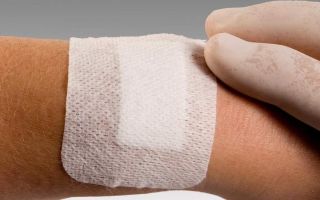Allergy to the patch after surgery or various medical procedures can cause a lot of trouble for the patient. Itching and redness where the skin comes into contact with the patch are the most harmless manifestations of this kind of allergy. Patients also experience wet blisters that take a long time to heal. So it's worth knowing if your skin reacts to the adhesive on the inside of the band-aid.
Types of patches
There are the following types of adhesive tapes:
- household adhesive plaster;
- bactericidal with a gauze base impregnated with brilliant green or other antiseptic solution;
- anti-nicotine;
- pepper.
All of these types can cause pain in an allergic person with increased sensitivity to certain components.
Allergy to the patch is not uncommon. More and more people are experiencing discomfort after using such a necessary device for domestic and medical purposes.
Use in everyday life and in medicine
Very common for fixing a cut area of skin, such as on a finger, or when wearing uncomfortable/new shoes. If you find an atypical reaction to the patch, you can refuse to wear it.
When it comes to medical events, sometimes you can’t do without a patch.
The adhesive plaster is used by medical staff:
- For fixing a bandage on a wound or fixing a postoperative suture.
- To secure the catheter for intravenous injections.
In this case, it is important to note that the catheter is attached for no more than three days. Then it needs to be replaced or removed. So the skin under the influence of oxygen will breathe and the risk of affected skin areas will be reduced.
Treating a Patch Allergy
In terms of symptoms, an allergic reaction to a band-aid refers to a skin allergy and is similar to contact dermatitis. The treatment prescribed in this case is similar. First of all, you should rid the skin of glue, to which the body reacts so violently. This can be done with alcohol diluted with water. It should be diluted 1: 1 so as not to burn the epidermis that has already suffered so much.
What to do if you are allergic to a band-aid, of course, a dermatologist can tell you, but you can also provide first aid for acute manifestations of an allergy at home.
Start taking antihistamines as soon as you see an unusual reaction to the band-aid in the form of a rash, blisters, or severe itching. You can also externally act on the affected skin with special ointments. However, do not rush to use hormone-containing drugs. Corticosteroid drugs can only be used in small doses and for a short time. If a child is allergic to a patch, such ointments are prohibited altogether.
An allergy to a patch will not heal quickly.
As an alternative, look for harmless products, such as those used to treat the skin of babies. Bepanten cream or Advantan, as practice shows, effectively reduce itching and cope with redness.
Fenistil gel may be suitable for you. It will cool the skin and relieve itching.
There is a hypoallergenic type of plaster - micropores. You can try it if you are allergic.
Silk, non-woven fabric, artificial or water-repellent plaster - any of these types can be unsafe, but with adequate treatment, this problem can be solved quite successfully. Be careful about your health. It is better not to spare money and give preference to high-quality products that do not cause allergies.


